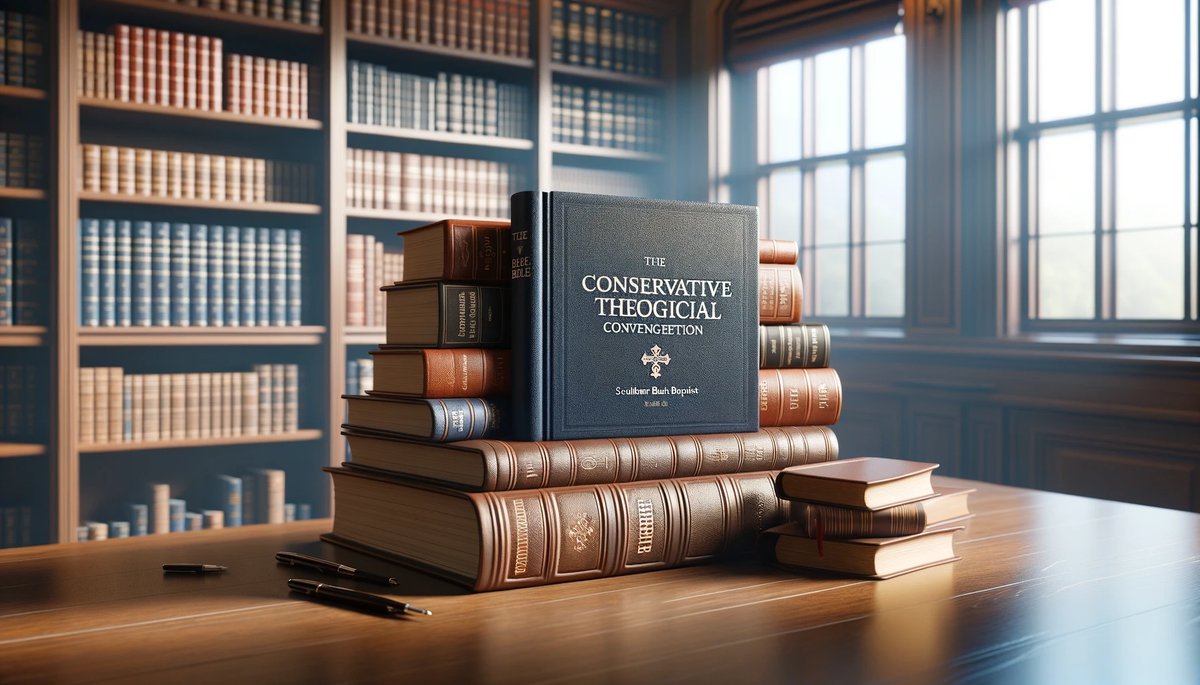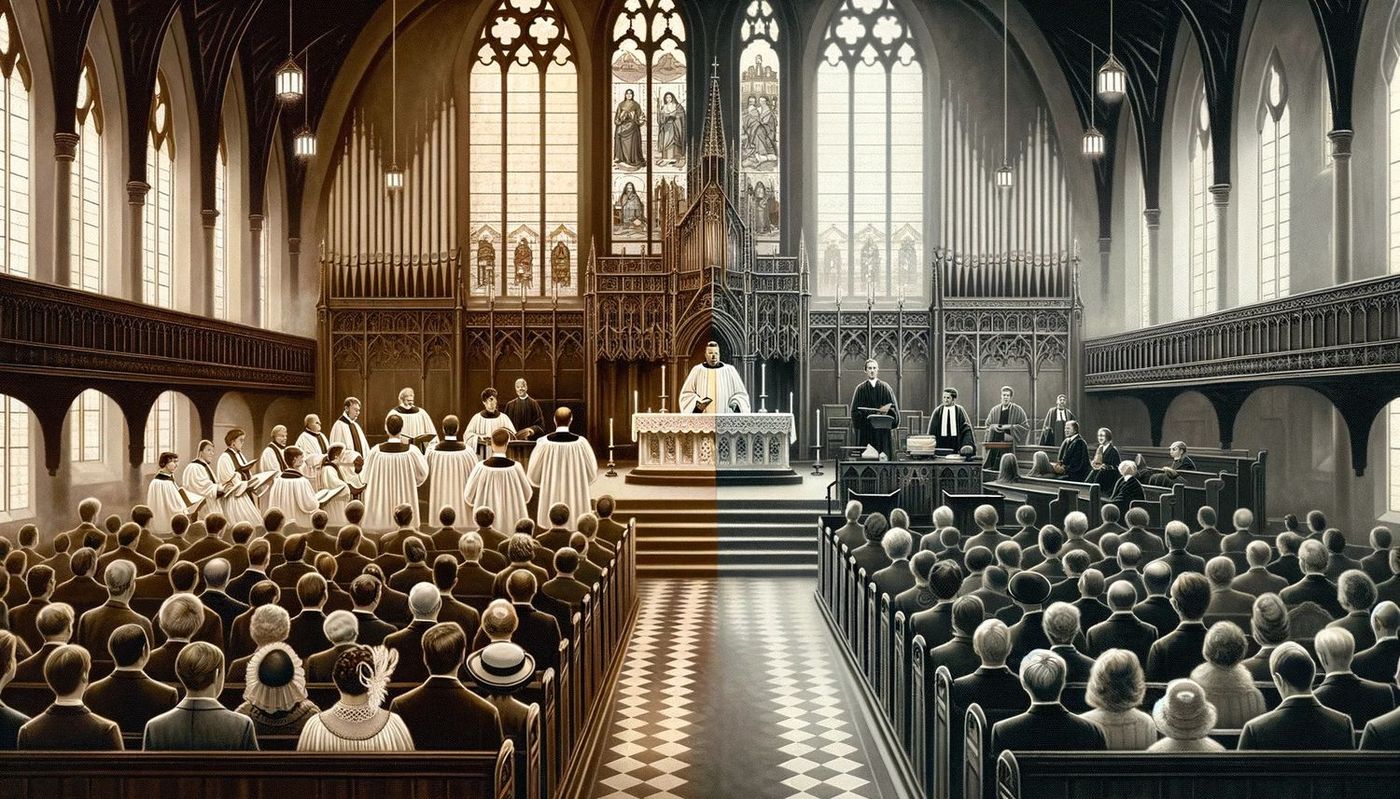Home>Theology and Spirituality>What Is The Difference Between Southern Baptist And Baptist


Theology and Spirituality
What Is The Difference Between Southern Baptist And Baptist
Published: February 21, 2024
Peter Smith, Editorial Director at Christian.net, combines deep insights into faith, politics, and culture to lead content creation that resonates widely. Awarded for his contributions to religious discourse, he previously headed a major organization for religious communicators, enhancing dialogue on faith's societal impacts.
Discover the key distinctions between Southern Baptist and Baptist beliefs in theology and spirituality. Explore the differences and similarities in their religious practices.
(Many of the links in this article redirect to a specific reviewed product. Your purchase of these products through affiliate links helps to generate commission for Christian.net, at no extra cost. Learn more)
Table of Contents
Introduction
The Southern Baptist and Baptist denominations are often associated with each other, leading to confusion about their differences. While they share a common heritage, they have distinct beliefs, practices, and organizational structures that set them apart. Understanding these differences is essential for those seeking a church community that aligns with their spiritual values and preferences.
In this article, we will delve into the historical roots, core beliefs, worship practices, and organizational structures of the Southern Baptist and Baptist denominations. By exploring these aspects, we aim to provide clarity on the distinctions between these two influential branches of Christianity. Whether you are a member of either denomination, a curious observer, or someone exploring their faith journey, this exploration will shed light on the unique characteristics that define each group.
The journey begins with a look at the historical evolution of the Southern Baptist and Baptist denominations, tracing their origins and the factors that led to their divergence. From there, we will examine their fundamental beliefs and practices, offering insight into the theological and doctrinal differences that shape their identities. Additionally, we will explore the leadership and organizational structures within these denominations, highlighting the varying approaches to governance and decision-making.
As we navigate through the differences in worship styles and traditions, we will uncover the diverse expressions of faith that distinguish the Southern Baptist and Baptist congregations. By the end of this exploration, you will have gained a deeper understanding of the nuanced distinctions between these two Christian denominations, empowering you to make informed decisions about your spiritual journey and community involvement.
History of Southern Baptist and Baptist
The history of the Southern Baptist and Baptist denominations is intertwined with the broader narrative of the Protestant Reformation and the subsequent emergence of various Christian movements. The Baptist tradition traces its roots to the 17th century in England, where dissenting voices within the Church of England sought to reform and purify the existing religious practices. This period of religious upheaval gave rise to the Baptist movement, characterized by its emphasis on believer's baptism and the autonomy of local congregations.
The early Baptists, influenced by the teachings of figures like John Smyth and Thomas Helwys, espoused the principles of religious freedom, voluntary association, and the separation of church and state. These foundational beliefs laid the groundwork for the development of Baptist communities in England and, later, in the American colonies.
As the Baptist movement took root in America, it underwent diversification and regional variations, leading to the formation of different Baptist groups. One significant offshoot was the creation of the Southern Baptist Convention in 1845. The catalyst for this split was the issue of slavery, which had become a point of contention among Baptists in the southern United States. The Southern Baptist Convention was established by pro-slavery Baptists who sought to maintain their autonomy and uphold the institution of slavery within the church.
In contrast, the broader Baptist community, often referred to as the "Northern Baptists," opposed the expansion of slavery and sought to distance themselves from the pro-slavery stance of their southern counterparts. This ideological divergence ultimately culminated in the formal separation of the Southern Baptist Convention from the mainline Baptist community, solidifying the distinct identity of the Southern Baptist denomination.
Over the years, both the Southern Baptist Convention and the broader Baptist tradition have continued to evolve, adapting to changing social, cultural, and theological landscapes. While the Southern Baptist Convention remains one of the largest Protestant denominations in the United States, the Baptist tradition as a whole has experienced growth and diversification, encompassing a spectrum of theological perspectives and worship practices.
The historical trajectory of the Southern Baptist and Baptist denominations reflects the complex interplay of religious, social, and political forces, shaping their distinct identities and theological emphases. Understanding this historical backdrop is crucial for appreciating the nuanced differences that define these two influential branches of Christianity.
Beliefs and Practices
The Southern Baptist and Baptist denominations share foundational Christian beliefs while exhibiting variations in specific theological emphases and practices. Both groups affirm the authority of the Bible as the inspired and infallible Word of God, emphasizing its central role in shaping their doctrinal convictions and ethical principles. Additionally, they uphold the core tenets of the Christian faith, including the belief in the Triune God—Father, Son, and Holy Spirit—and the redemptive work of Jesus Christ.
In terms of theological nuances, the Southern Baptist Convention tends to emphasize conservative interpretations of scripture and doctrinal orthodoxy, often aligning with traditional evangelical perspectives. This inclination is reflected in their adherence to the "Baptist Faith and Message," a statement of beliefs that outlines their theological positions on key doctrines such as salvation, the church, and the Christian life. The Baptist Faith and Message underscores the authority of scripture, the priesthood of all believers, and the autonomy of local churches, serving as a doctrinal touchstone for Southern Baptists.
On the other hand, the broader Baptist tradition encompasses a diverse theological landscape, encompassing a spectrum of theological perspectives and doctrinal emphases. While many Baptist congregations align with conservative theological positions akin to those of the Southern Baptist Convention, others may espouse more moderate or progressive interpretations of scripture, reflecting a range of theological diversity within the Baptist community.
In terms of practices, both the Southern Baptist and Baptist denominations prioritize believer's baptism, viewing it as an outward expression of one's personal faith and commitment to Christ. This emphasis on baptism by immersion distinguishes them from other Christian traditions that practice infant baptism or different modes of baptism. Additionally, both denominations uphold the practice of congregational worship, where members gather for prayer, singing hymns, and engaging with biblical teachings.
While the core beliefs and practices form a unifying foundation for the Southern Baptist and Baptist denominations, the nuances in their theological emphases and doctrinal interpretations contribute to their distinct identities within the broader tapestry of Christian faith expressions. Understanding these variations is essential for individuals seeking a faith community that resonates with their theological convictions and spiritual journey.
Leadership and Structure
The Southern Baptist and Baptist denominations exhibit differences in their leadership and organizational structures, reflecting varying approaches to governance and decision-making within their respective congregations. These distinctions play a significant role in shaping the operational dynamics and administrative frameworks of each denomination.
Within the Southern Baptist Convention, the leadership structure is characterized by a congregational polity, emphasizing the autonomy of individual churches while fostering collaboration and mutual support through cooperative networks. At the heart of this structure is the concept of local church autonomy, where each congregation retains the authority to make independent decisions regarding matters such as pastoral leadership, budgeting, and ministry initiatives. This emphasis on congregational autonomy aligns with the historical Baptist principle of local church independence, allowing for flexibility and adaptability in addressing the unique needs and contexts of diverse congregations.
In contrast, the broader Baptist tradition encompasses a range of leadership and governance models, reflecting the diverse theological perspectives and historical trajectories within the Baptist community. While many Baptist churches adhere to congregational polity similar to that of the Southern Baptist Convention, others may adopt variations such as elder-led or Presbyterian models, where leadership responsibilities are distributed among a council of elders or presbyters. These alternative structures reflect the theological diversity and contextual considerations present within the broader Baptist tradition, offering congregations the flexibility to align their governance models with their specific theological and practical priorities.
The Southern Baptist Convention operates through a representative system, where elected delegates from member churches gather annually for the Southern Baptist Convention Annual Meeting to deliberate on key issues, elect leaders, and make decisions that impact the collective direction of the denomination. This representative framework underscores the collaborative nature of decision-making within the Southern Baptist Convention, allowing for broader participation and input from diverse congregations while upholding the principles of local church autonomy.
In the broader Baptist tradition, the governance and decision-making processes may vary based on the denominational affiliations and theological orientations of individual congregations. While some Baptist churches may adopt similar representative structures to the Southern Baptist Convention, others may prioritize a more decentralized approach, empowering local congregations to make significant decisions without a formalized hierarchical assembly.
These diverse leadership and structure dynamics within the Southern Baptist and Baptist denominations reflect the nuanced interplay of historical, theological, and practical considerations, shaping the organizational frameworks and decision-making processes that define their respective identities. Understanding these variations provides valuable insights into the operational dynamics and governance principles that guide the Southern Baptist and Baptist congregations.
Differences in Worship and Traditions
The Southern Baptist and Baptist denominations exhibit distinct worship styles and traditions that reflect their theological emphases, cultural influences, and historical legacies. These differences encompass various facets of religious expression, encompassing worship practices, liturgical traditions, and ceremonial observances that contribute to the unique identities of each denomination.
In the context of worship, the Southern Baptist Convention is known for its emphasis on vibrant congregational singing, fervent prayer, and expository preaching rooted in conservative theological perspectives. Worship services within Southern Baptist congregations often feature a blend of traditional hymns and contemporary praise songs, reflecting a commitment to honoring both the rich heritage of hymnody and the evolving musical preferences of congregants. The focal point of these services is the proclamation of biblical truths through expository preaching, where the pastor expounds on the meaning and application of scripture, emphasizing its relevance to contemporary life. This emphasis on biblically grounded preaching underscores the doctrinal commitments of the Southern Baptist Convention and its dedication to nurturing a deep understanding of scripture among its members.
In contrast, the broader Baptist tradition encompasses a diverse array of worship styles and traditions, reflecting the theological diversity and cultural contexts within the Baptist community. While many Baptist congregations share similarities with the worship practices of the Southern Baptist Convention, others may incorporate liturgical elements, responsive readings, and sacramental observances that align with more traditional or high church expressions of worship. These variations in worship styles and traditions reflect the theological breadth and contextual adaptability present within the broader Baptist tradition, accommodating a spectrum of worship preferences and theological emphases.
Furthermore, the observance of traditions and ceremonial practices varies within the Southern Baptist and Baptist denominations, encompassing rituals such as baptism, communion, and special liturgical seasons. Both denominations uphold the significance of believer's baptism by immersion, viewing it as a symbolic representation of spiritual rebirth and commitment to Christ. The manner in which baptism is administered and the theological significance attributed to it may exhibit variations across individual congregations, reflecting the diverse theological perspectives within the Baptist community.
Additionally, the observance of communion, or the Lord's Supper, varies in its frequency and liturgical form within Southern Baptist and Baptist congregations. While some congregations may observe communion weekly or monthly, others may do so less frequently, with variations in the liturgical elements and ceremonial practices associated with the sacrament. These differences in the observance of baptism and communion reflect the diverse theological and practical considerations present within the Southern Baptist and Baptist denominations, contributing to the rich tapestry of traditions and ceremonial practices that define their worship experiences.
In essence, the differences in worship styles and traditions between the Southern Baptist and Baptist denominations reflect the diverse expressions of faith, theological emphases, and cultural influences that shape their respective identities. Understanding these variations provides valuable insights into the rich tapestry of worship practices and traditions that define the Southern Baptist and Baptist congregations, offering individuals a glimpse into the diverse ways in which these denominations engage with the sacred rhythms of communal worship and spiritual observance.
Conclusion
In conclusion, the Southern Baptist and Baptist denominations, while sharing a common historical heritage, exhibit distinct theological emphases, worship practices, and organizational structures that define their unique identities within the broader tapestry of Christian faith expressions. The historical evolution of these denominations, rooted in the Protestant Reformation and the subsequent diversification of the Baptist movement, has contributed to the nuanced differences that shape their beliefs, traditions, and community dynamics.
The Southern Baptist Convention, with its conservative theological positions and congregational autonomy, emphasizes doctrinal orthodoxy, vibrant congregational singing, and expository preaching, reflecting a commitment to biblical fidelity and evangelical fervor. In contrast, the broader Baptist tradition encompasses a diverse theological landscape, accommodating a spectrum of theological perspectives and worship styles, ranging from traditional hymnody to liturgical expressions.
Furthermore, the leadership and organizational structures within the Southern Baptist and Baptist denominations reflect varying approaches to governance, decision-making, and congregational autonomy, underscoring the adaptability and contextual sensitivity present within the Baptist community. While the Southern Baptist Convention operates through a representative system, the broader Baptist tradition encompasses a range of governance models, reflecting the theological diversity and historical legacies within the Baptist movement.
The differences in worship styles and traditions, including the observance of baptism and communion, further highlight the rich tapestry of religious expression within the Southern Baptist and Baptist denominations, offering individuals a glimpse into the diverse ways in which these communities engage with the sacred rhythms of communal worship and spiritual observance.
Understanding these distinctions is essential for individuals seeking a faith community that aligns with their theological convictions and spiritual journey. By appreciating the nuanced differences between the Southern Baptist and Baptist denominations, individuals can make informed decisions about their involvement in a church community that resonates with their beliefs, values, and worship preferences.
Ultimately, the Southern Baptist and Baptist denominations, with their rich historical legacies and diverse theological expressions, embody the enduring vitality and adaptability of the Baptist tradition, offering a vibrant tapestry of faith experiences and community engagement for individuals seeking a meaningful and enriching spiritual journey.














